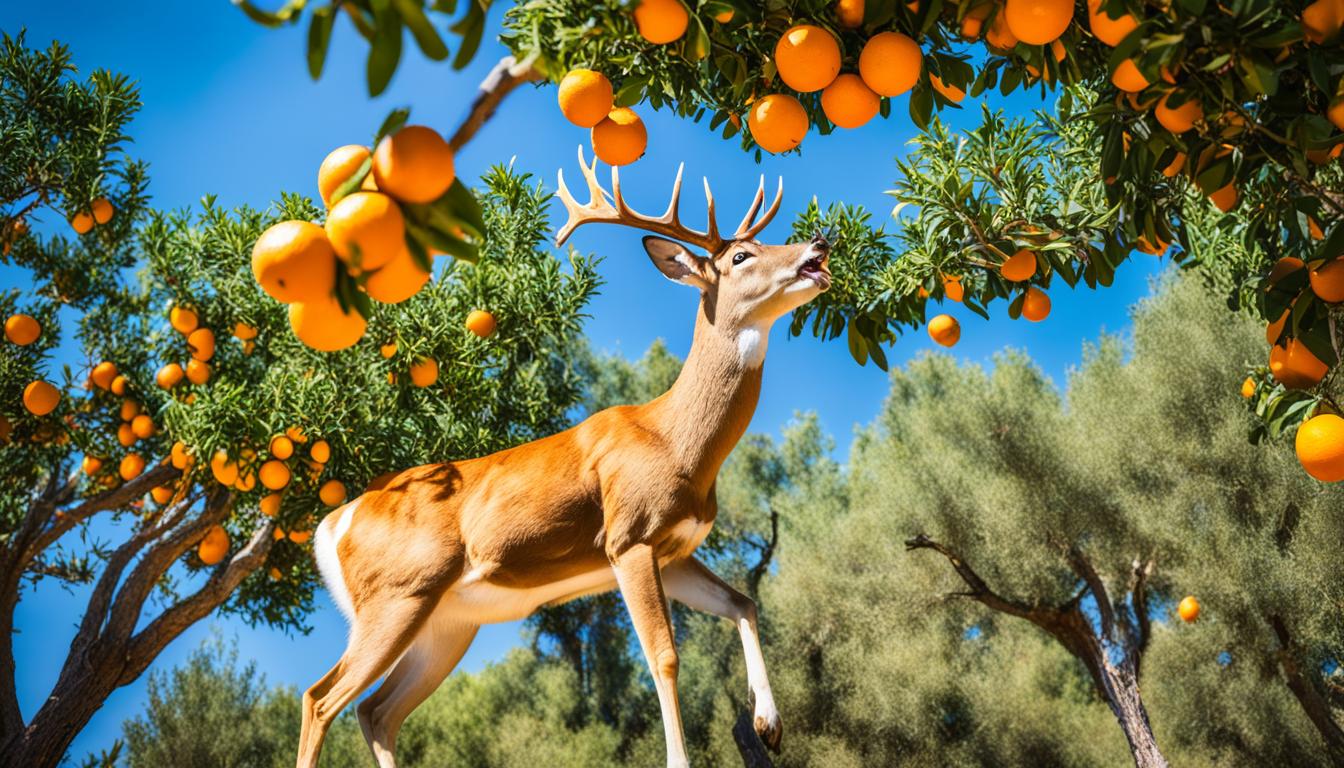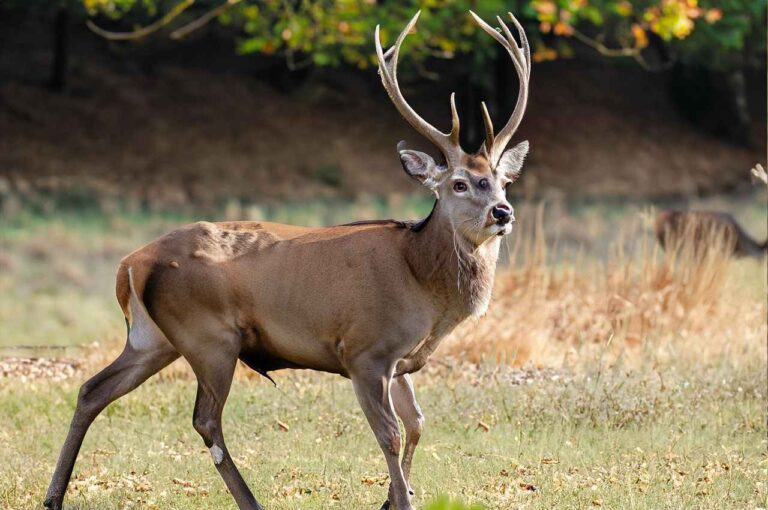Can Deer Eat Oranges? Citrus Diet Facts
When it comes to deer and their diet, many people wonder if they can eat oranges. As surprising as it may seem, deer do consume citrus fruits, including oranges and tangerines, although they may not be their top favorites. In this article, we will explore the facts about deer’s citrus diet and their nutritional benefits.
Deer, being herbivores, have adaptable feeding habits and recognize that oranges and tangerines are edible. They often turn to these fruits when other food sources are scarce in their natural habitat. Consuming these citrus fruits provides deer with essential nutrients such as vitamin C, iron, calcium, magnesium, potassium, and protein.
While oranges and tangerines can be beneficial for deer, it is important to offer them in moderation. Large quantities of oranges can be harmful to deer, especially if they are not accustomed to eating them. Therefore, if you choose to feed deer in the wild or include citrus fruits in their diet, it’s best to do so in small amounts.
Content Highlights
ToggleKey Takeaways:
- Deer do eat oranges and tangerines, recognizing them as edible fruits.
- Oranges and tangerines provide deer with essential nutrients.
- Offer citrus fruits to deer in moderation to avoid potential harm.
- Deer turn to citrus fruits when other food sources are scarce.
- Understanding deer’s citrus diet can assist in wildlife management and feeding practices.
How to Use Orange Peels as a Deer Repellent
When it comes to keeping deer away from your garden or plants, using orange peels as a natural deer repellent can be an effective and eco-friendly solution. The strong scent of oranges is known to repel deer and deter them from approaching your valuable vegetation. Not only is this method organic and sustainable, but it also eliminates the need for purchasing commercial deer repellents that may contain harmful chemicals.
To use orange peels as a deer repellent, simply rip the peels into small pieces and scatter them strategically around your garden beds or paths. The potent smell will create a barrier that deer find unpleasant and will convince them to steer clear of your plants. For enhanced effectiveness, you can also soak the orange peels in water overnight and use the resulting liquid to spray on the plants or areas you want to protect from deer.
Orange peels decompose slowly, which means that their repellent properties can last for an extended period. Unlike other repellents that require frequent reapplication, using orange peels as a deer deterrent saves you time and effort. However, it’s important to note that while orange peels can be effective in repelling deer, they may not be foolproof. If alternative food sources are scarce, deer may still be attracted to the area despite the presence of orange peels.
Incorporating orange peels as part of a comprehensive deer management strategy can greatly reduce the risk of deer damage to your garden or crops. By combining natural deterrents like orange peels with other methods such as fencing, repellents, or cultural control tactics, you can create a more effective defense against deer and protect your plants.

| Benefits of Using Orange Peels as a Deer Repellent | Effective Alternatives to Commercial Deer Repellents |
|---|---|
|
|
Managing Deer Damage and Control Methods
Deer can be a significant nuisance, causing damage to tree and vine crops, as well as occasionally feeding on alfalfa and row crops. To effectively manage deer damage, there are several control methods that can be employed.
Exclusion methods, such as fencing, are among the most effective ways to keep deer out of fields and gardens. Woven wire fences with a height of 6 to 8 feet can successfully exclude deer, while electric fences can provide a more affordable option. These physical barriers create a deterrent and prevent deer from accessing vulnerable areas.
Another approach to reducing deer damage is the use of repellents. While their effectiveness may vary, repellents can help deter deer from feeding on plants. There are various deer repellent products available on the market, including sprays and granules. It is important to follow the instructions carefully to ensure optimal results.
In addition to exclusion and repellent methods, there are other control tactics that can be employed. Frightening devices, such as noise-making devices or the presence of dogs, can help scare away deer. However, it is essential to note that these methods may require additional maintenance and resources to be effective.
Shooting deer is considered a last resort option and is generally not recommended. It is subject to state game management laws and should only be carried out by licensed hunters in accordance with applicable regulations.
Implementing cultural control tactics, such as habitat modification, can also play a role in minimizing deer damage. This may involve managing vegetation to reduce attractive food sources for deer or creating physical barriers within the landscape.
- Wyoming Deer Season 2025-2026 New Schedule & Rules - 15 September 2025
- Wisconsin Deer Season 2025-2026: WI Deer Hunting Guide [Schedule, Rules, Licenses] - 15 September 2025
- West Virginia Deer Season 2025-2026 Complete Date & Guide - 15 September 2025






